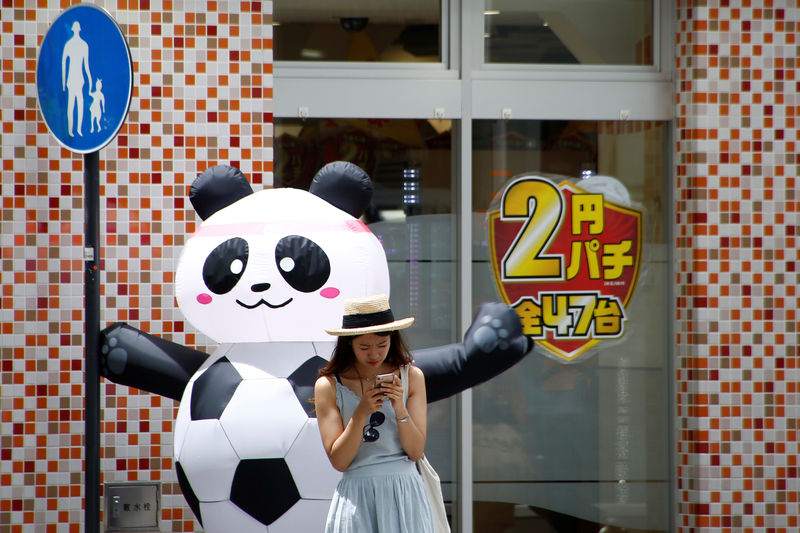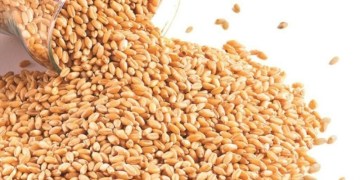 © Reuters. A woman uses her mobile phone at a shopping district in Tokyo
© Reuters. A woman uses her mobile phone at a shopping district in Tokyo2/2
By Leika Kihara and Sumio Ito
TOKYO (Reuters) – The Bank of Japan this month might concede that inflation could fall short of its 2 percent target for as long as three more years, sources say, in what would be the strongest sign yet of acceptance that its goal cannot be reached quickly.
The view may emerge from the BOJ’s July 30-31 policy meeting, which includes a quarterly review of its long-term projections.
Instead of ramping up stimulus to fire up inflation, the BOJ likely will point to structural factors that could weigh on inflation for years, say the sources familiar with its thinking.
Acceptance of not reaching 2 percent for up to three more years would likely reinforce market expectations the central bank is nowhere near an exit from ultra-easy policy.
And such a move would be the latest sign the BOJ is drifting away from Governor Haruhiko Kuroda’s experiment, launched in 2013, to eradicate Japan’s deflationary mindset. This involved a pledge to boost inflation quickly, plus price projections many analysts saw as too optimistic.
A changed view on 2 percent achievability would also underscore the BOJ’s wariness to expand stimulus, given its dwindling tool-kit and the growing cost of prolonged easing, such as hitting bank profits.
“It may take longer than expected for inflation to hit the BOJ’s target as structural factors may be keeping inflation and wages low,” said one of the sources.
“But as long as the economy is sustaining momentum to hit the goal, it can stand pat on policy,” the source said on condition of anonymity.
SIDE-EFFECTS EMERGING
The BOJ has regularly cut its price projections at recent quarterly reviews, but only for the first two of a three-year projection period. It always saw inflation nearing 2 percent in the final year.
The central bank may break from that pattern at the July meeting and consider cutting its projection for the year ending in March 2021, the sources say.
The BOJ now projects inflation of 1.3 percent this fiscal year, followed by 1.8 percent for both fiscal 2019 and 2020.
Earlier, sources told Reuters the BOJ will likely cut the inflation forecast to around 1.0 percent for this fiscal year, and to around 1.5 percent for the one ending in March 2020.
The forecasts are the median from individual projections of nine board members.
At the July review, the BOJ will also look more closely into structural factors affecting the pace of price changes, including the spread of online shopping and companies’ efforts to deal with labor shortages via automation rather than wage hikes, the sources say.
By shifting its policy focus away from the price target, the BOJ would give itself more room to whittle down stimulus in future if the cost of easing outweigh the benefits, some analysts say.
Five years of heavy money printing has failed to accelerate inflation to the BOJ’s 2 percent target, forcing it to maintain its stimulus program even as other central banks eye an exit from crisis-mode policies.
Subdued inflation forced the BOJ to remove in April any timeframe for hitting its elusive price target.
Some BOJ officials have publicly warned of the rising cost of prolonged easing, which is drying up bond market liquidity and squeezing bank margins. Deputy Governor Masayoshi Amamiya has said the bank could adjust its ultra-easy policy in the future to address the rising cost of easing.
“Many people in the BOJ know well that the current stimulus program is very radical,” said a person familiar with central bank thinking.
“While it’s important to achieve the price target, there will be an increasing focus on the side-effects of the current policy.”
Source: Investing.com





























